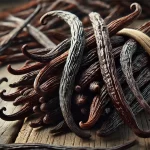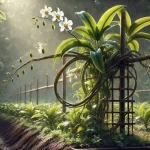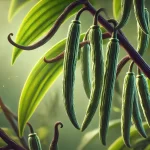Vanilla, globally appreciated for its unique aroma and flavor, has a rich and fascinating history that dates back to pre-Hispanic cultures. From its use in ceremonial rituals to becoming a pillar of the global food and perfume industry, vanilla has come a long way. This article explores its origin, historical evolution, and how the current industry preserves and transforms this valuable natural resource.
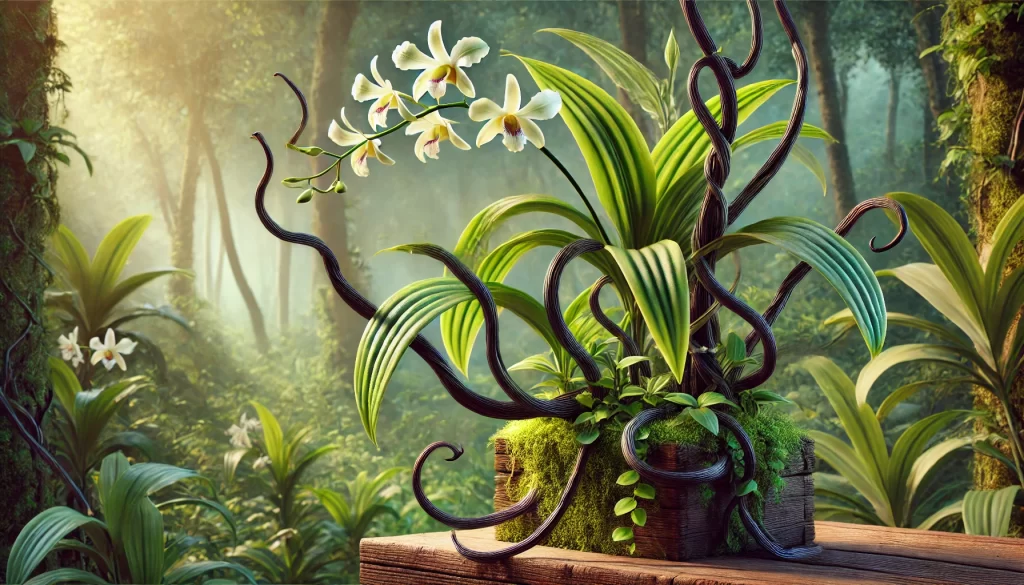
Introduction to Vanilla
Vanilla is one of the most coveted spices in the world. Its essence comes from the pods of orchids of the genus Vanilla, mainly Vanilla planifolia. Since ancient times, this plant has been highly valued for its aromatic and medicinal properties.
Pre-Hispanic Origins of Vanilla
Ritual and Culinary Use in Mesoamerica
Before the arrival of Europeans, Mesoamerican civilizations, such as the Aztecs and Mayans, cultivated and used vanilla not only as a seasoning but also in religious ceremonies. Vanilla was used to flavor cacao drinks, a sacred food and symbol of wealth and power.
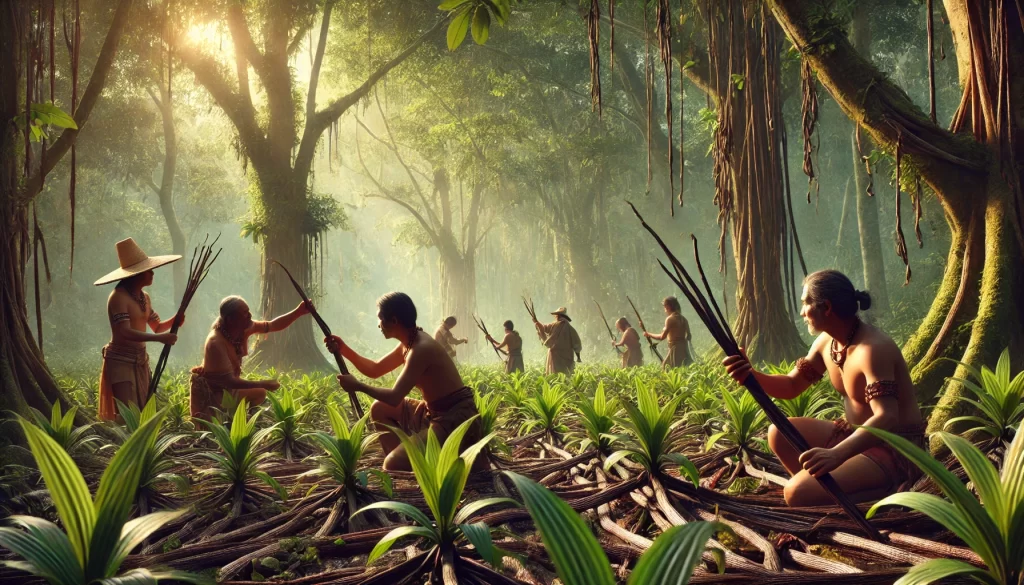
Table 1: Timeline of Vanilla Use in Pre-Hispanic Cultures
| Era | Civilization | Vanilla Use |
|---|---|---|
| 15th Century | Aztecs | Cacao flavoring, ceremonial rituals |
| 12th – 15th Century | Mayans | Medicine, rituals, food preservation |
| 10th – 15th Century | Totonacs | Intensive cultivation, spice trade |
Source: Smithsonian Magazine, archaeological research, and historical texts.
Vanilla in the Conquest and Global Exchange
With the arrival of Europeans to America, vanilla was introduced to the world. Spanish colonizers marveled at this spice and began exporting it to Europe, initiating its global spread. However, cultivating vanilla outside of its native environment posed a challenge due to the complexity of its pollination, which depended on a native bee, the melipona.
Industrial Expansion and Cultivation Challenges
Manual Pollination and Global Propagation
In the 19th century, it was discovered that manually pollinating vanilla flowers allowed the plant to be cultivated in other regions of the world. This breakthrough was crucial in expanding cultivation to Indian Ocean islands like Madagascar and Comoros, which today are some of the main vanilla producers. The labor-intensive process of manual pollination largely explains the high cost of natural vanilla.
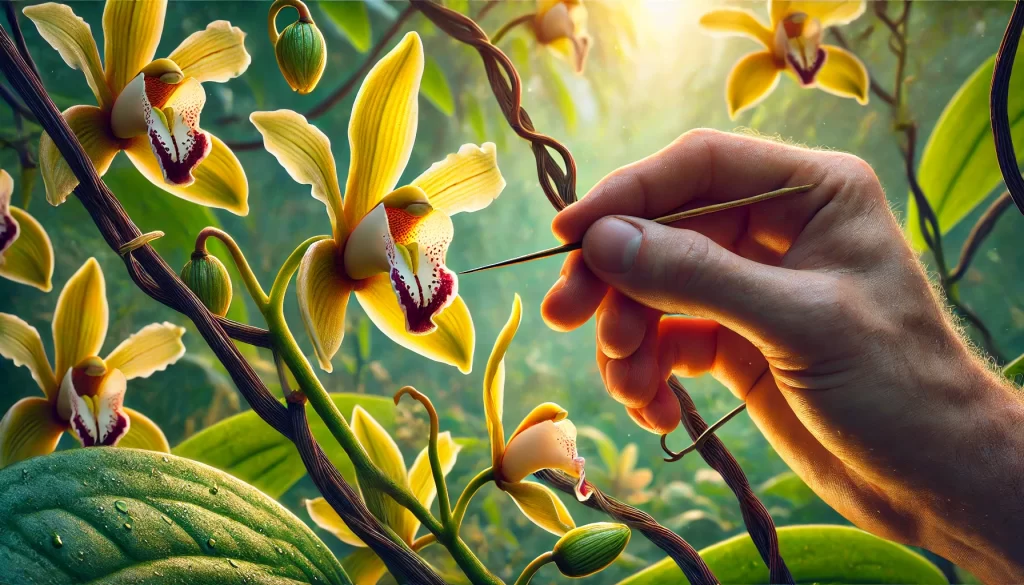
Vanilla in the Modern Industry
Today, vanilla is used not only in gastronomy but also in the production of perfumes, cosmetics, and pharmaceutical products. The global industry faces challenges such as price fluctuations, growing demand, and the need for sustainable cultivation and harvesting methods.
Table 2: Main Vanilla Producing Countries and Their Annual Production
| Country | Estimated Production (tonnes/year) | Key Features |
|---|---|---|
| Madagascar | 2,000+ | Largest global producer, high quality |
| Indonesia | 1,000+ | Extensive cultivation, favorable climate |
| Mexico | 100+ | Historical origin, native varieties |
Source: Food and Agriculture Organization (FAO).
Cultural Legacy and Sustainability
Conservation of Traditional Varieties
Despite industrialization, some communities in Mexico and other parts of Mesoamerica still maintain traditional vanilla cultivation and harvesting practices. These practices not only preserve biodiversity but also promote sustainable and environmentally friendly methods.
Challenges and Opportunities for the Future
Vanilla production faces issues such as adulteration and labor exploitation. Fair trade initiatives and organic certification programs are emerging to ensure that producers receive fair compensation and that production is carried out sustainably. Technology and research are also working to develop new cultivation techniques that increase resistance to pests and diseases, while reducing environmental impact.
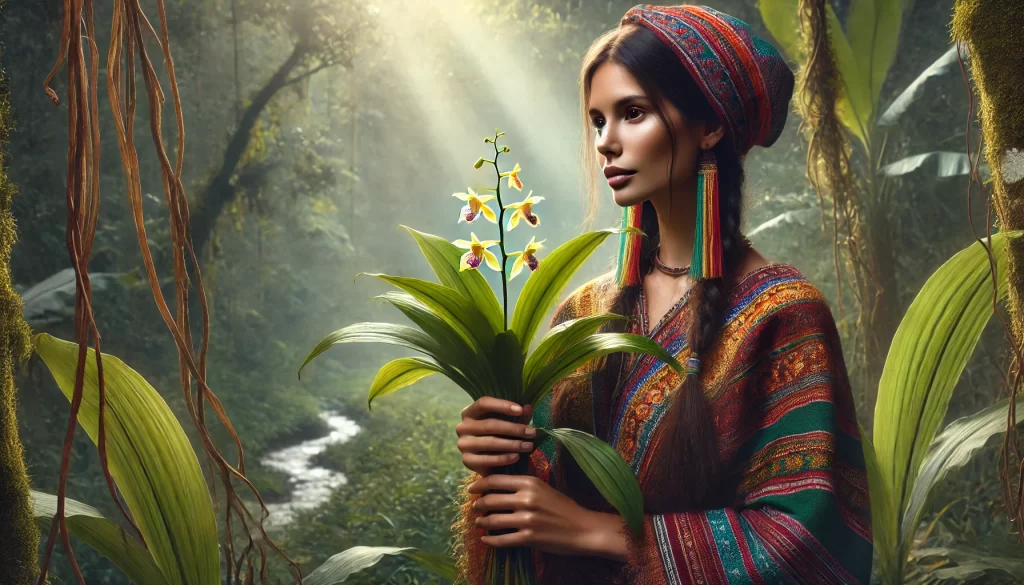
The journey of vanilla from pre-Hispanic cultures to becoming a global industry reflects its cultural and economic value throughout history. Today, the appreciation of vanilla focuses not only on its aroma and flavor but also on the importance of maintaining sustainable and ethical practices in its production.
References:
- Smithsonian Magazine. History of Vanilla.
- FAO. Spice production statistics.
- Archaeological research on pre-Hispanic use of vanilla.
This historical journey not only enriches our knowledge about vanilla but also invites us to value and protect this natural resource, ensuring its availability and quality for future generations.
 AgronoBlog – Agriculture Blog
AgronoBlog – Agriculture Blog 